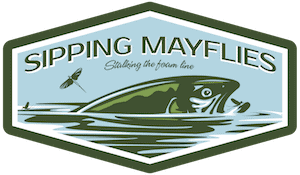The Best Fly Fishing Floatant (and how to use it)
Mar. 6th, 2022
Fly fishing floatant is a substance you apply to your dry flies in order to keep them from sinking. This allows your dries to float on the surface of the water, which is where you want them.
If you don’t use floatant, your flies will become waterlogged and start sinking below the surface within 10-20 casts. Dry flies are tied to imitate insects on the surface of the water, so if they sink (aka “drown”), trout may ignore them (unless they’re keyed-in on emergers), or you may not notice a strike from a trout if it does happen.
There are quite a few different types of fly fishing floatants on the market, including gel, paste, liquid, and powder versions, all made by various brands. I’ve used them all, and I’ll reveal the absolute best floatant I’ve ever used–the only one you’ll ever need (or want). It’ll keep your dry flies floating much longer.
I’ll also explain what fly desiccant is, how to use it, and what product works best.
What is Floatant in Fly Fishing?
Fly fishing floatant is a substance, usually oily or waxy in nature, that is rubbed into to your dry fly in order to make it more resistant to water. The idea is that you’re essentially coating your fly pattern with something that will help deter the absorption of water, and thus prevent your fly from becoming waterlogged and sinking.
Here’s a gorgeous brown trout (Salmo trutta) I caught on a dry fly in April, one of many that day. I was using floatant (and desiccant) that kept my tiny size 22 dry flies floating high on the water.
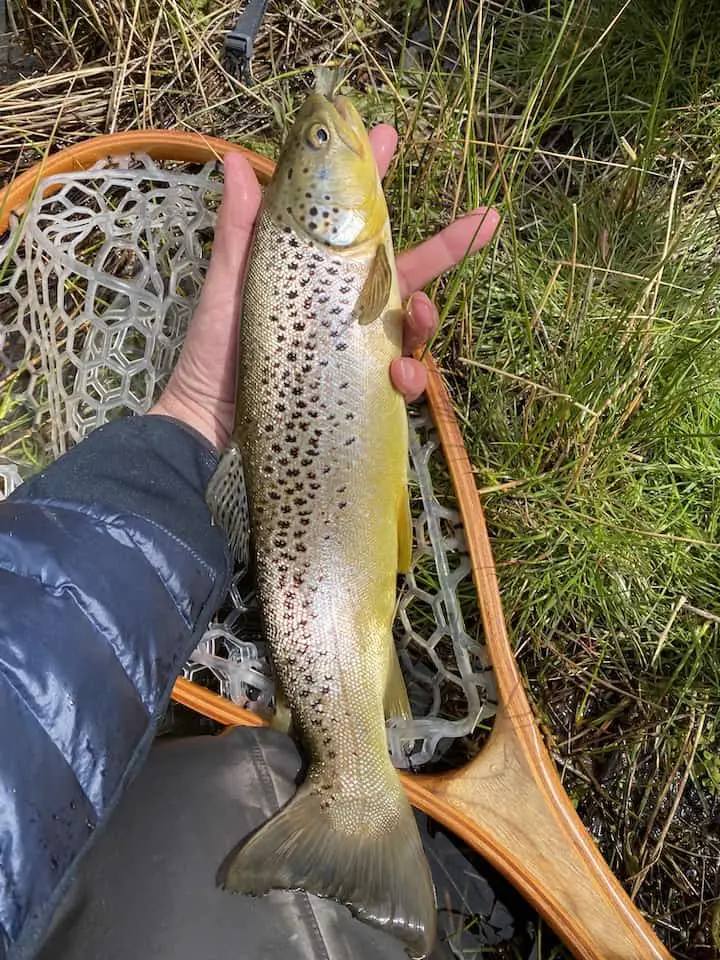
Most floatants nowadays are silicon gel-based, but there are paste-based, brush-on, and spray-on variants. But, the brush-on and spray-on floatants are gimmicky and really inefficient in my opinion.
Don’t worry about the various types because it can be overwhelming. Gel-based floatants are by far the most popular, and there’s no reason you should be using anything else.
The floatant you put on your fly will eventually dissipate, but you never re-apply floatant to a fly that’s wet. I’ll explain this below.
As a commercial product, it usually comes in a small, squeezable plastic bottle. Hold the bottle upside-down to apply it.
When do you use fly floatant?
I mentioned earlier that you only use fly floatant with dry flies. Since dry flies are the only fly patterns you want to float, it makes sense you wouldn’t use floatant on sub-surface patterns such as nymphs, streamers, or wet flies.
It’s important to remember that you only apply floatant to your fly once, before you start fishing. Don’t let your fly get wet before you apply floatant. If your fly does get wet, remove it and tie-on another. It’s that important.
Here’s the reason: once a fly absorbs some water, it won’t be able to effectively absorb floatant.
Generally speaking, you only apply floatant to dry flies tied with feathers. You wouldn’t apply floatant to foam flies such as a chernobyl ant. Foam flies don’t need floatant or desiccant, as they’re basically impossible to sink.
One very important rule is that you never put floatant onto a fly that’s been tied with CDC (cul-de-canard) feathers. I wrote an article explaining CDC flies that you may want to check out.
If possible, pre-treating flies with floatant is a good idea if it’s done within an hour or so of fishing. This gives the oily substance more time to penetrate deeper into the fly’s fibers. But, it’s not ideal to treat your flies too far ahead of time as they will attract dust and dirt.
How to use fly floatant
After your dry fly is tied-on, hold the fly by the hook with one set of fingers (I use my thumb and index finger) and squeeze a drop of gel floatant onto your fly. Now, gently massage the gel into the fly–all parts of it, dont be stingy.
Make sure to really get your fly saturated because the water will soak into any parts you miss. I gently squeeze the fly between two of my fingers to force the floatant into the body of the fly. This will keep your dry fly riding high in the water.
I mentioned earlier that you don’t apply floatant to CDC feathers. If you do, your fly will actually sink more quickly than it otherwise would. Sounds strange, but it’s true. CDC feathers are usually on the top of the fly (the wings), and are not found on most fly patterns. It’s usually something that’s clearly advertised when you buy flies.
For example, if you were buying some standard blue winged olive dry flies, you’d likely see a couple versions:
Blue winged olive (BWO) – or – CDC Blue winged Olive (BWO).
One more bit of information to remember is that you don’t apply floatant to any parts of an emerger fly that you want to ride below the surface. So, most often, you want the tail of an emerger fly pattern to sink below the surface, with the rest of the fly above the surface.
What I do is hold the tail between my thumb and index finger, thus sealing it off, and while I’m pinching the tail I apply gel to the rest of the fly.
Here’s a solid brown trout (Salmo trutta) I caught using a blue winged olive (BWO) dry fly, pre-treated with floatant (as always). This was one of five browns I landed in a relatively slow pool with a soft foam line.
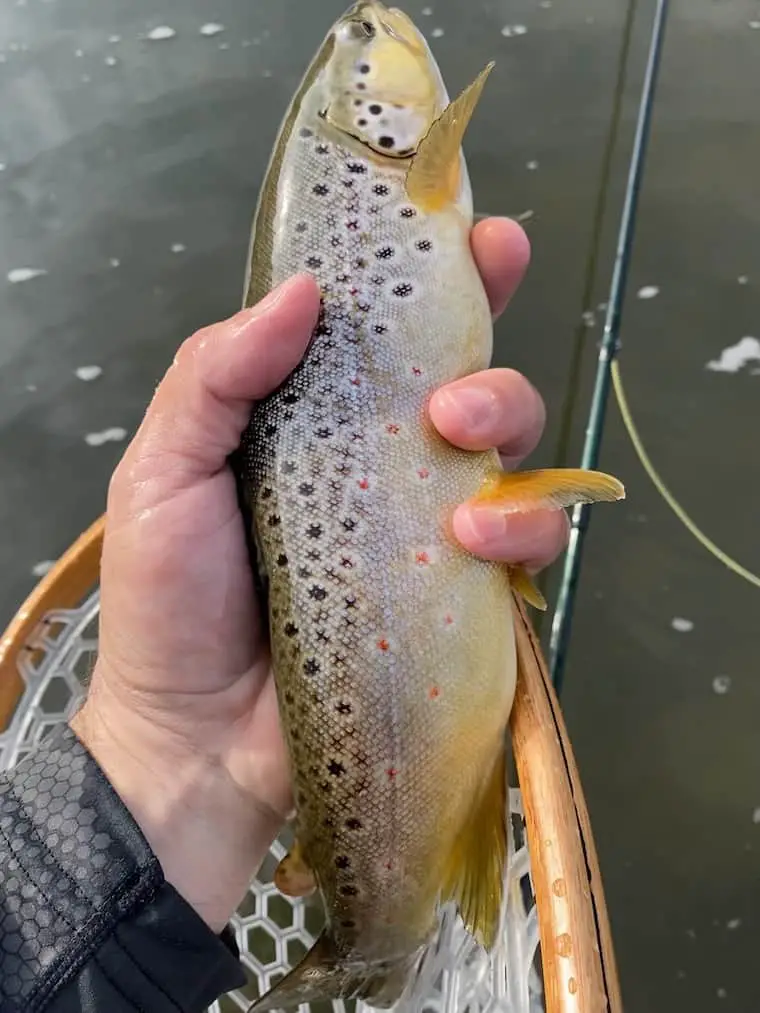
I always apply floatant before I put on sunscreen. This is my personal rule, and I can’t back it up scientifically. If you have sunscreen residue on your fingers, some of it’s going to get onto the dry fly. Maybe trout can smell it, or see it–but either way, that’s my rule.
Keeping floatant readily available on your slingpack or backpack is a must. Don’t miss my article on the best fly fishing slingpack I’ve ever used.
Fly floatant vs. fly desiccant
Fly floatant is an oily substance that saturates the fibers of your fly and helps prevent water absorption. Fly desiccant is what you use after water has inevitably worked its way into your fly pattern. The desiccant soaks-up water and your fly will become buoyant again.
So, we’ve discussed fly floatant extensively, but desiccant is just as important. The word “desiccant” is latin for “making thoroughly dry.”
Desiccant is a super dry powder mix, often silica-based crystals, that pulls water from your fly.
When do you use desiccant?
Floatant will last a while, sometimes for an hour or so, but eventually your dry fly is going to start sinking below the surface. When you notice this, bring your fly in and drop it into your bottle of fly desiccant.
Shake the bottle for 5-10 seconds. I then let it sit still for a few more seconds.
Pull your fly out of the bottle, blow the dust off, and begin casting again. Your fly will float as well as ever, like magic.
Ah, but it doesn’t last.
A desiccant treatment on your fly will give you 5-10 casts before youll need to reapply.
Also, don’t forget to reapply desiccant each time you catch a trout. The thick slime from fish can singlehandedly sink a fly that’s been treated with floatant.
Based upon countless hours on the water, the best desiccant I’ve found is Top Ride by Loon Outdoors. It’s my favorite.
Desiccant comes in bottles that are bigger than gel floatant containers. Here’s a look inside a bottle of desiccant.
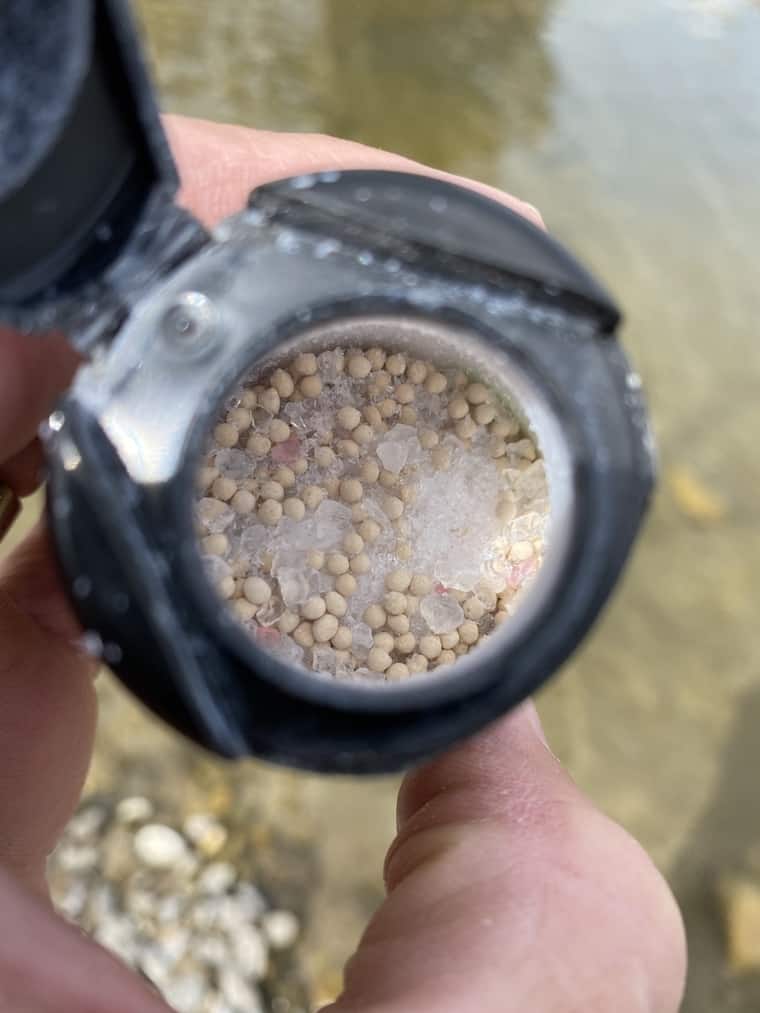
The Best Fly Fishing Floatant
I spend 80+ days each year fly fishing, and I quickly learn which products work best (and which ones suck). I can always tell when companies simply private label some chinese junk and call it their own.
The best fly floatant is made by Loon Outdoors. In fact, there are two products to which I’d apply the title of “best floatant.”
If you ever use dry flies with CDC feathers, you absolutely want to use Lochsa. It’s my top choice. Lochsa is floatant that works on CDC feathers–the only one that works. It’ll also work really well on non-CDC flies.
If you never use flies with CDC, Aquel by Loon Outdoors is the best you can get.
If you’re not familiar with CDC, read my article entitled, “What are CDC flies?“
But if you’re only going to buy one floatant, just get Lochsa.
In fact, I was just at a fly shop picking up more Lochsa, and when I went to buy it the guide at the counter said, “This stuff is the best. It’s all I use.” I agreed.
Honorable mention: there are none. Why would you want a list of “honorable mentions?” Just buy the best. Floatant is cheap.
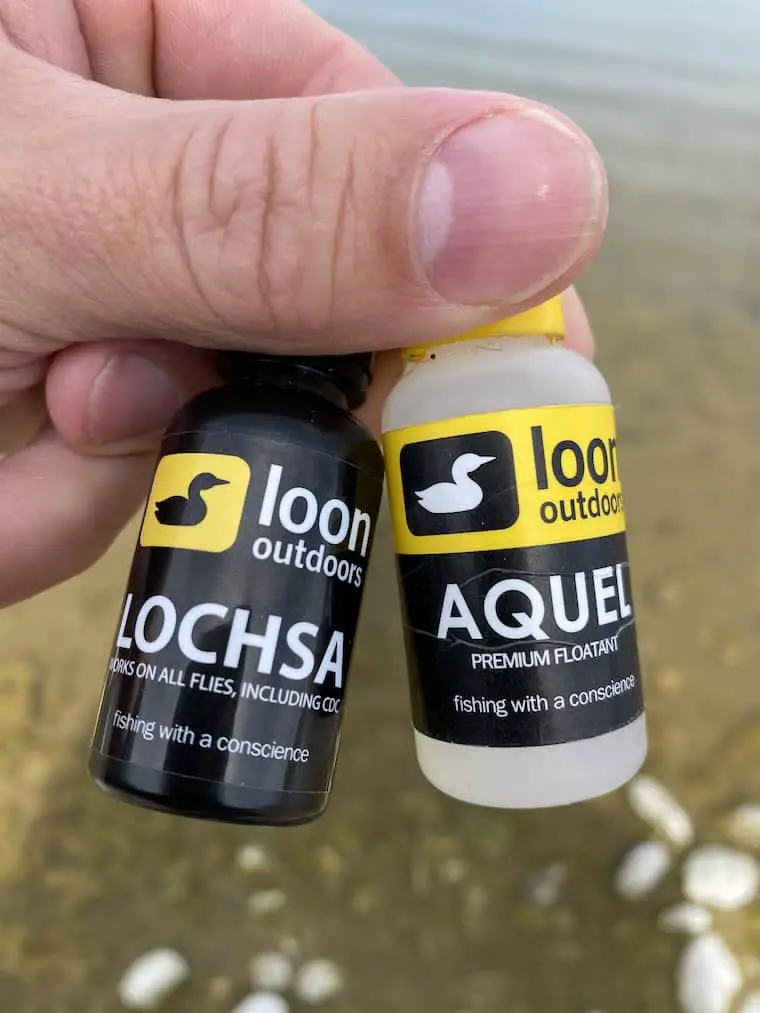
The Best Fly Desiccant
The best fly fishing desiccant I’ve ever used is called Top Ride by Loon Outdoors. It’s a superior product. It dries your flies and keeps them riding high on the water.
You’ll need to reapply every 5-10 casts, but a bottle of Top Ride will still last the average angler for years. Keep it in an easy-to-access spot (I keep mine on my chest).
When desiccant no longer revives your fly, it’s time to change flies and start the process over again. Once you’ve let the fly you’ve been using completely dry-out (usually at least overnight) you can start using it again.
Desiccant is also appropriately referred to as dry shake.
Can you use Floatant on fishing line?
Yes, you can absolutely use floatant on your fly fishing line. Specifically, you should apply it to the first three feet or so of your tippet, starting at your dry fly. Floatant will help keep your flies on the surface of the water, and it does the same thing for your leader.
While the above gel floatants will work on your leader and tippet, I highly recommend a specific product for use on your line. The best fly line floatant I’ve found is called Payette Paste by Loon Outdoors, and it’s all I use. It’s thicker (like grease) and lasts longer–I usually only need to apply it to my line once per outing.
Here’s an article I wrote on greasing your line.
Can I make my own floatant?
Yes, you can make your own fly floatant at home using paraffin and white gas. The exact recipe can be found online, although it’s admittedly a messy and involved process that frankly isn’t worth your time.
Pre-made floatant in a bottle is very inexpensive and can last you for years. In this case, DIY isn’t worth it.
Chapstick as a Fly Floatant
Once in a while someone will ask if chapstick can be used as a fly floatant. My answer is that you should always use bonafide floatant. It’s extremely inexpensive, and if you’ve already invested in a fly rod and reel, why skimp on something so important?
Don’t use chapstick as fly floatant, just buy the good stuff. The two floatants I’ve listed above range from $7 to $12, and each bottle will last you for at least a year.
Summary
Fly floatant keeps your flies from sinking and is something that every single dry fly angler needs in his or her equipment. It’s a must-have piece of gear that you’ll use often (so keep it handy). The same goes for desiccant. In fact, you’ll use desiccant much more often than floatant.
Stick with gel floatants and avoid the paste and wax-based products unless you have a very specific reason to do so. Gel works best in almost all situations.
The top floatants are made by Loon Outdoors, and they are Aquel (non-CDC dry flies) and Lochsa (CDC-friendly).
Some anglers call floatant “gink,” but you’ll probably get a strange look if you do.
If you haven’t been using floatant, it’s going to take your game to the next level.
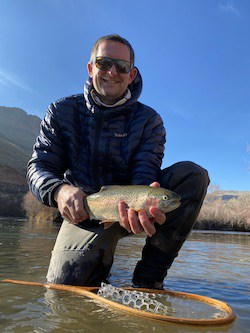
About the Author
My name's Sam and I'm a fly fishing enthusiast just like you. I get out onto the water 80+ times each year, whether it's blazing hot or snow is falling. I enjoy chasing everything from brown trout to snook, and exploring new waters is something I savor. My goal is to discover something new each time I hit the water. Along those lines, I record everything I learn in my fly fishing journal so I can share it with you.
Follow me on Instagram , YouTube, and Facebook to see pictures and videos of my catches and other fishing adventures!
